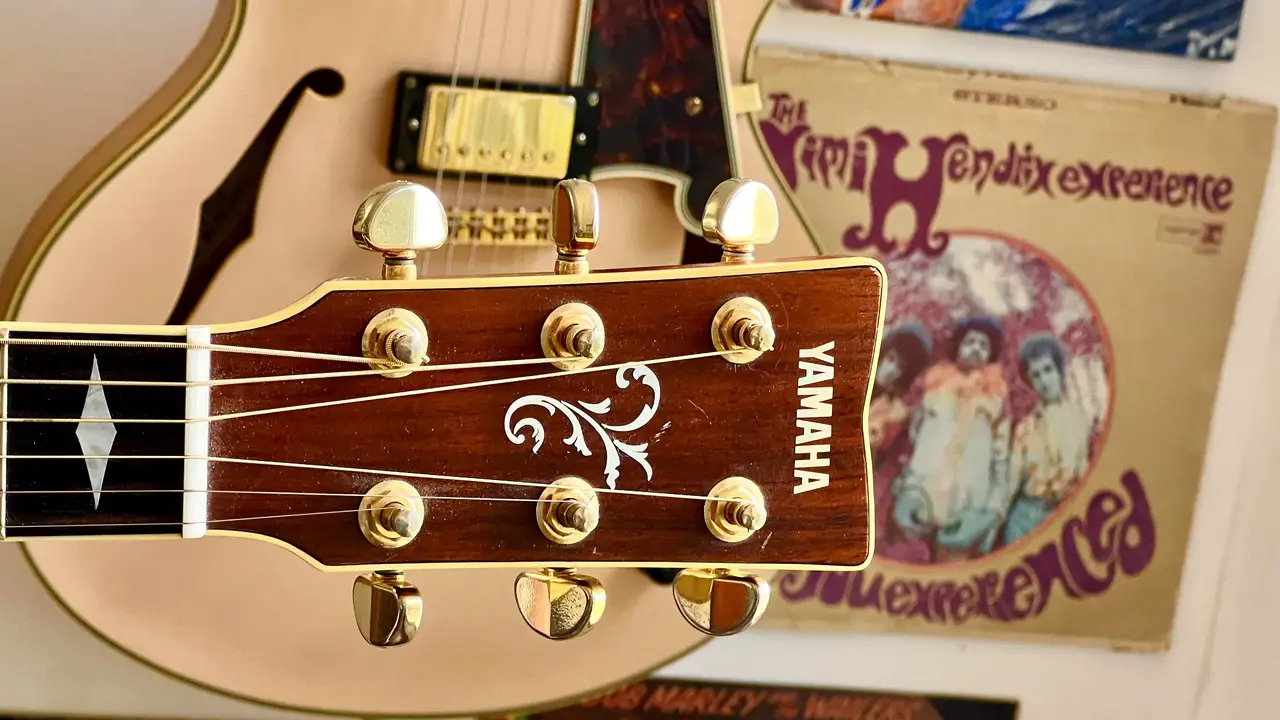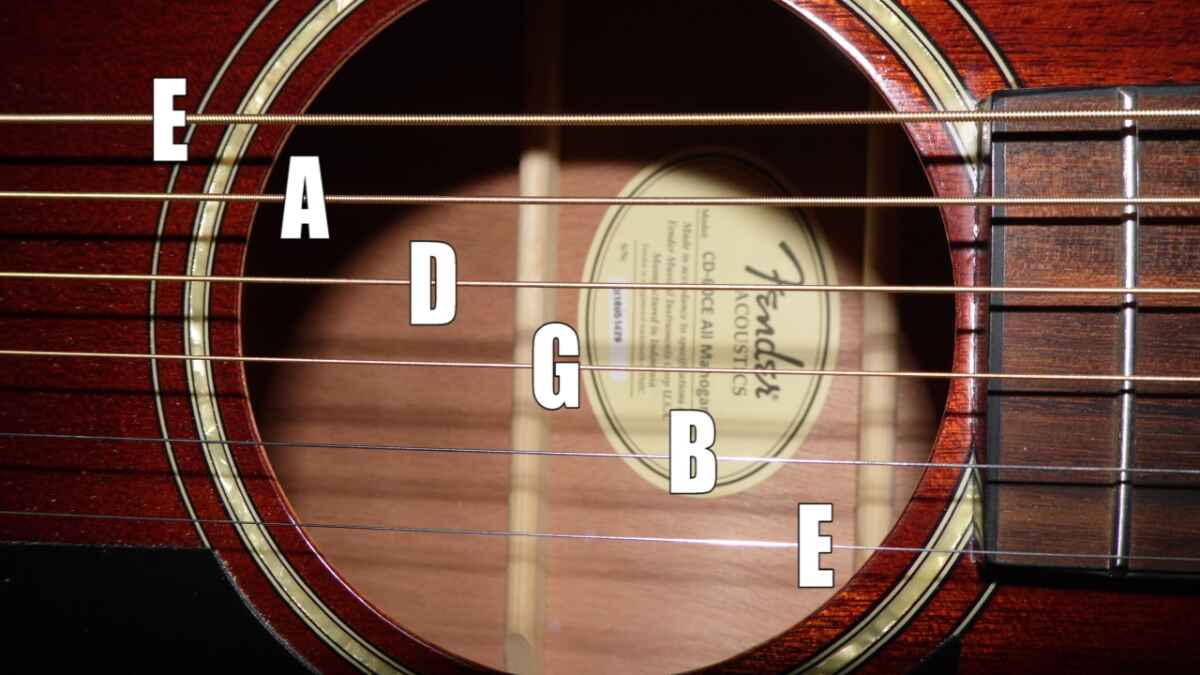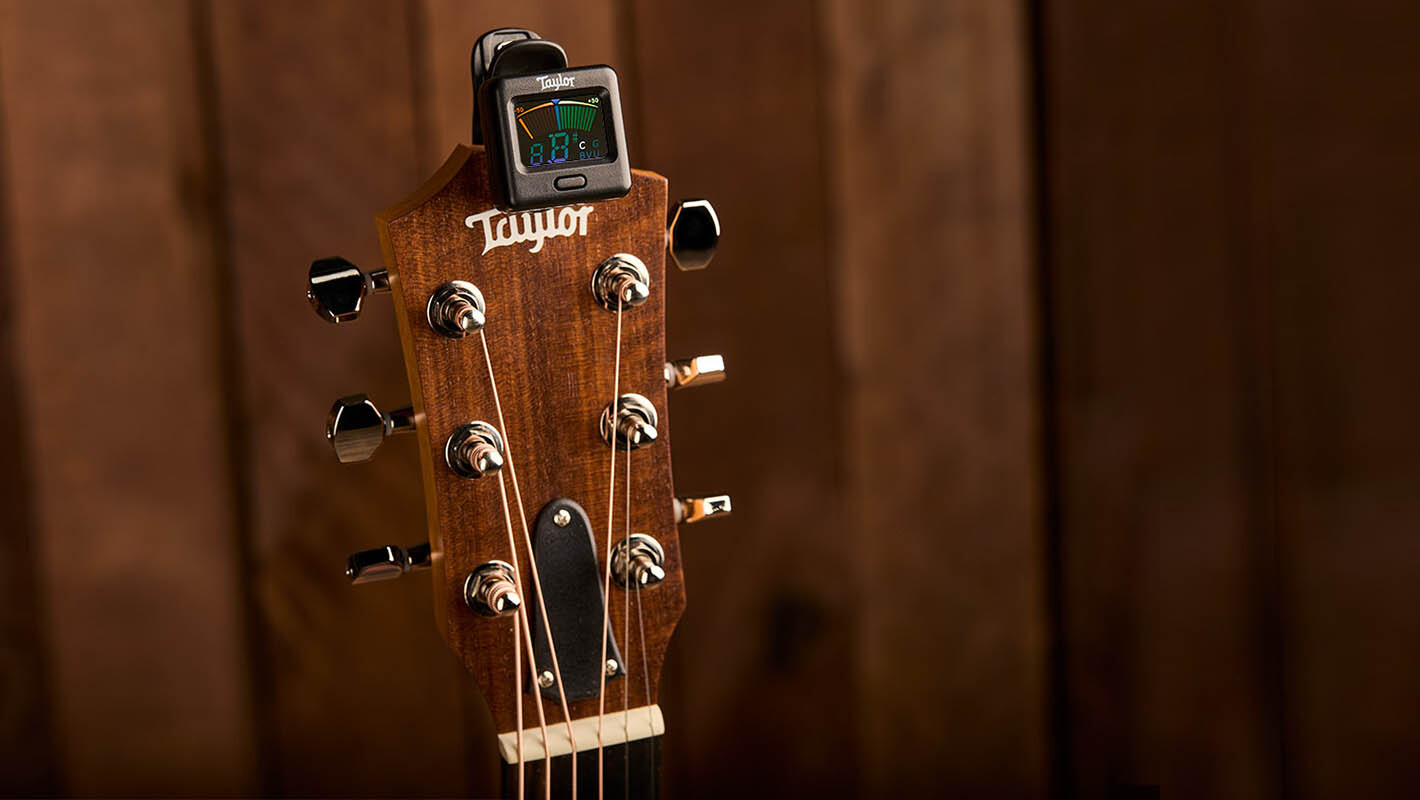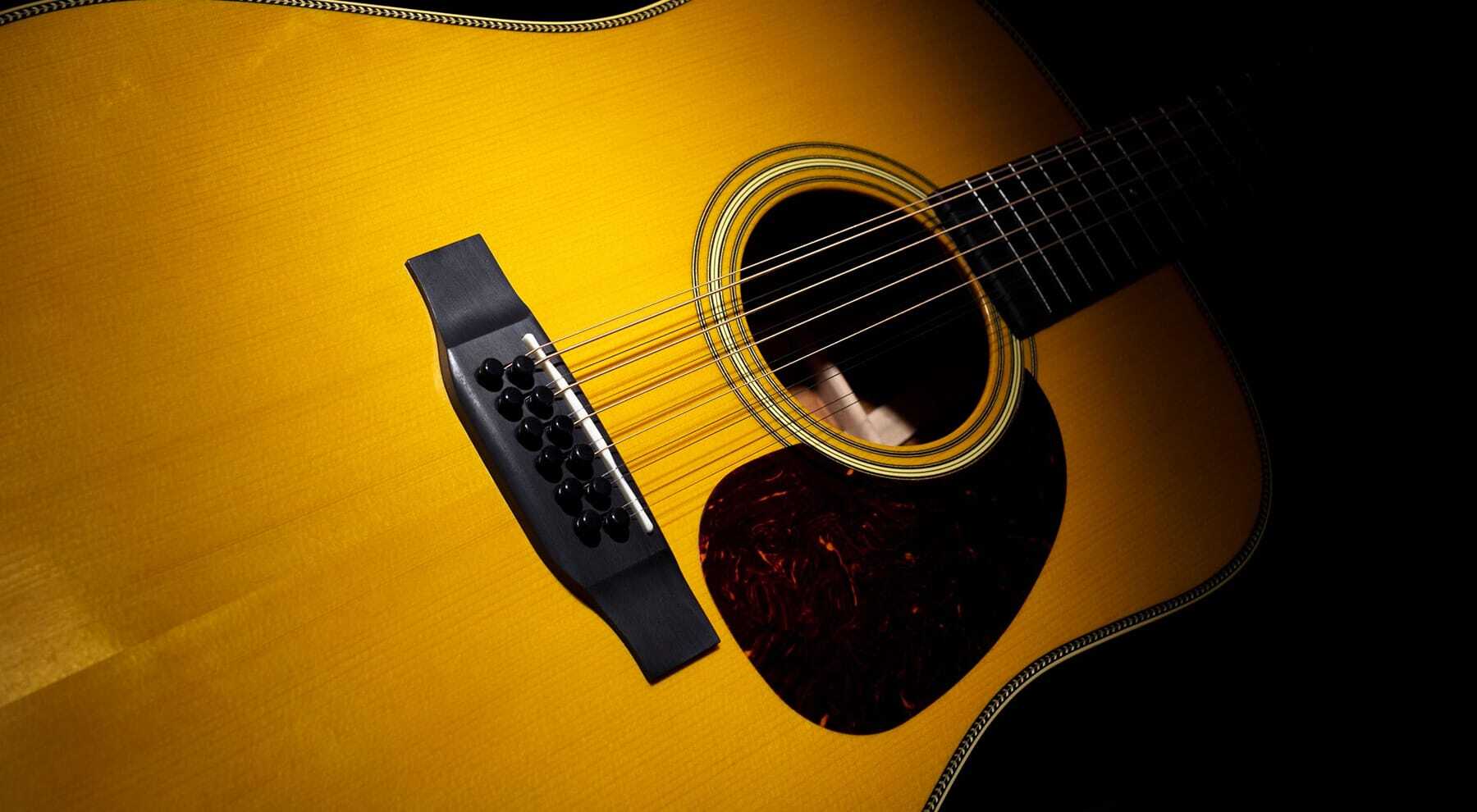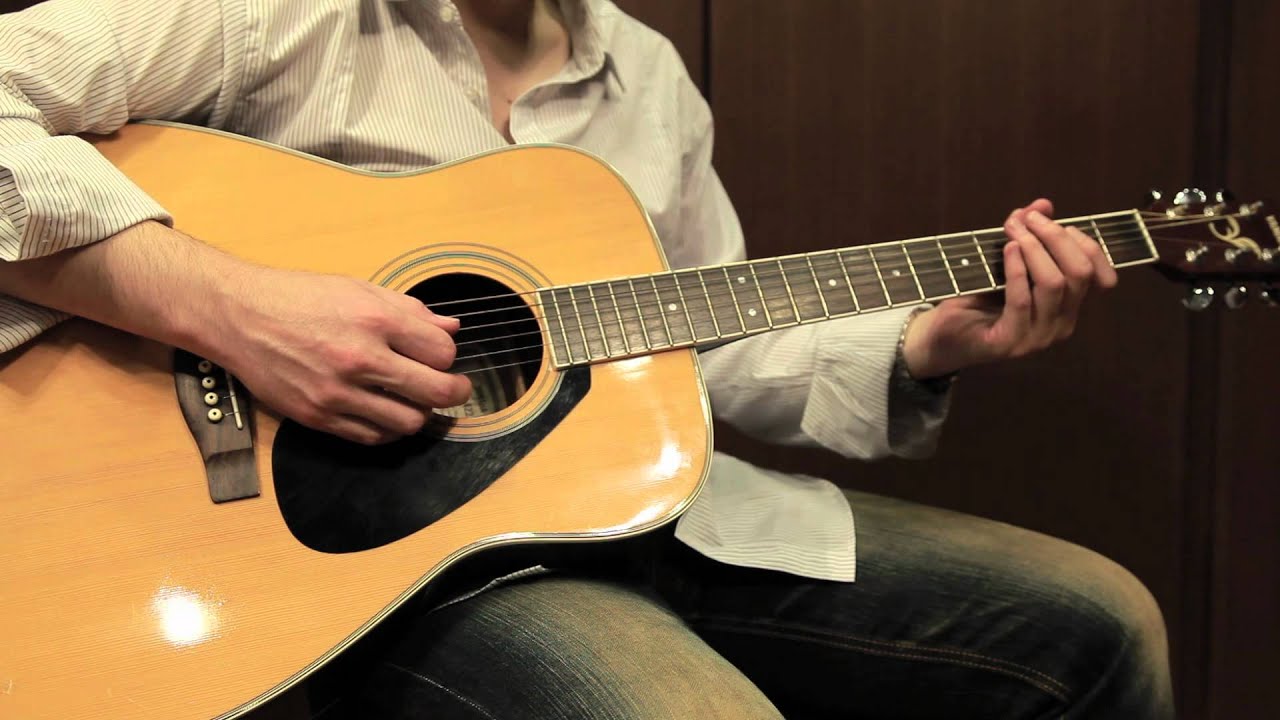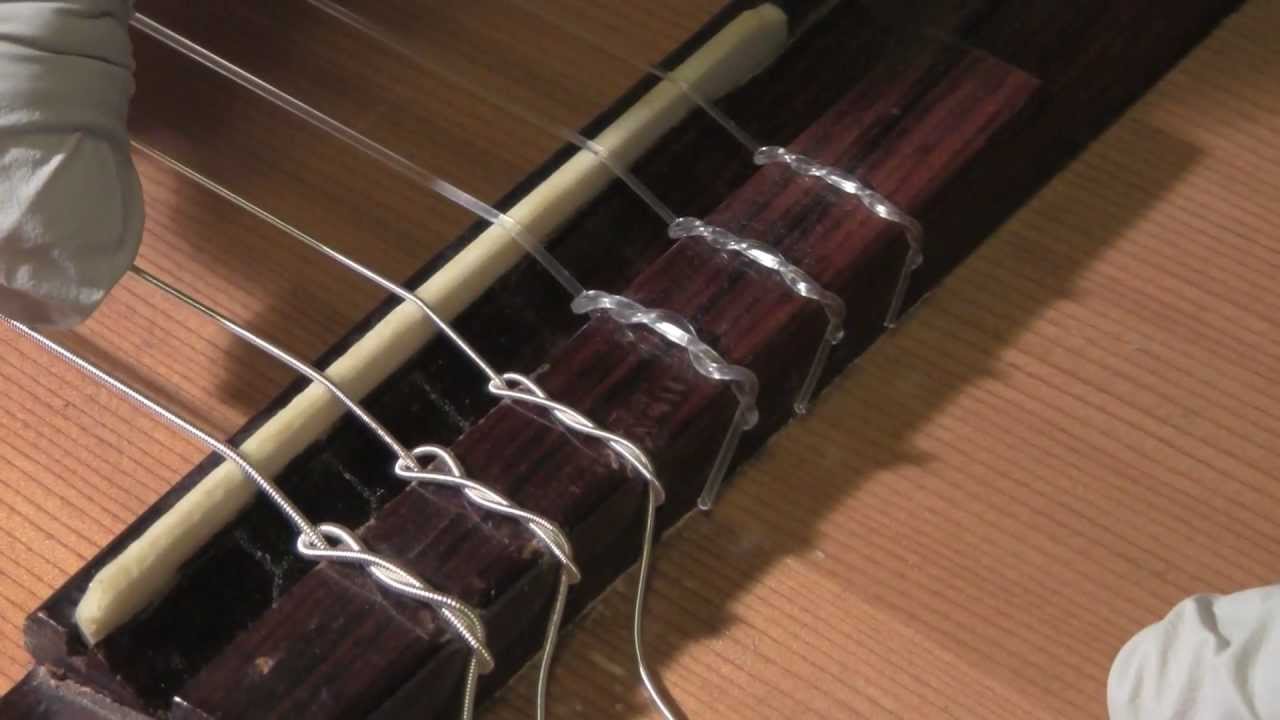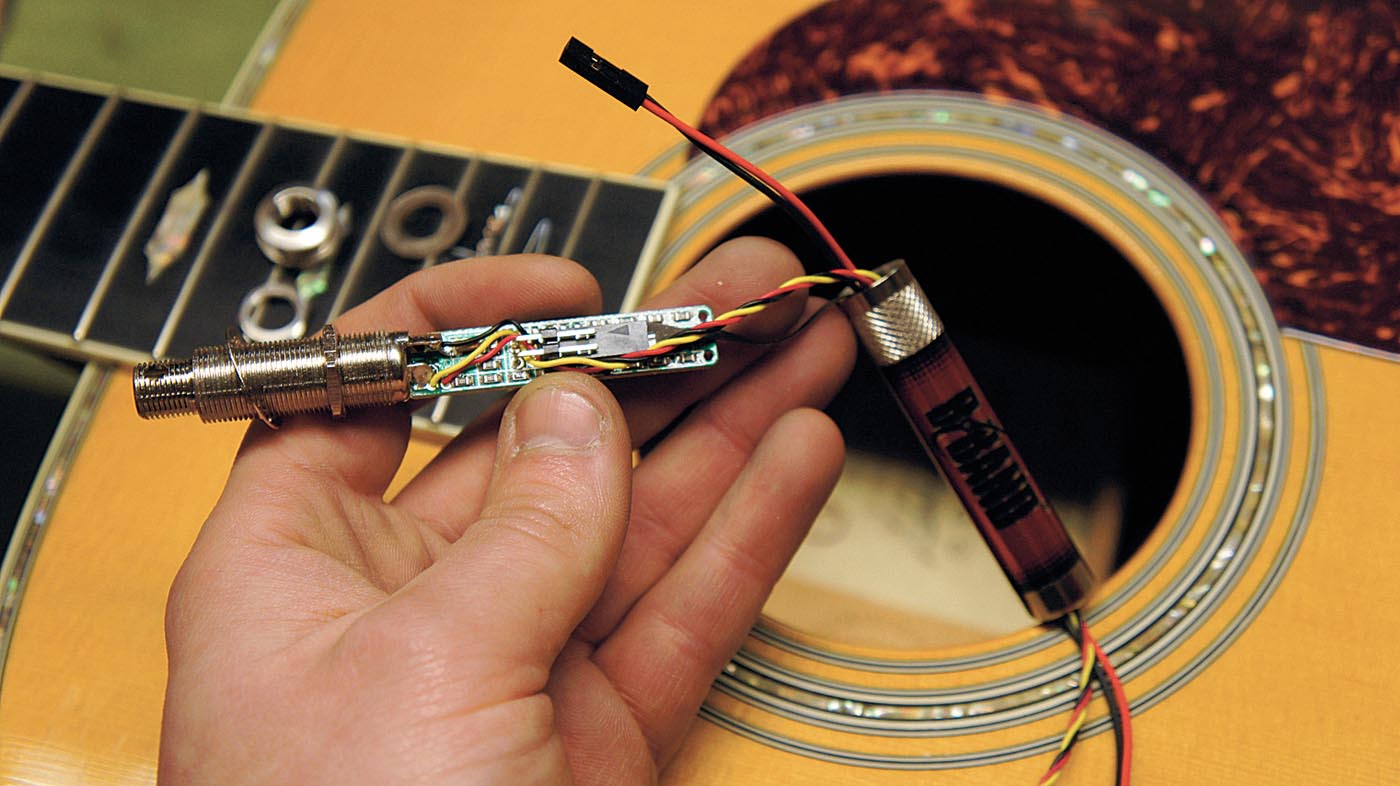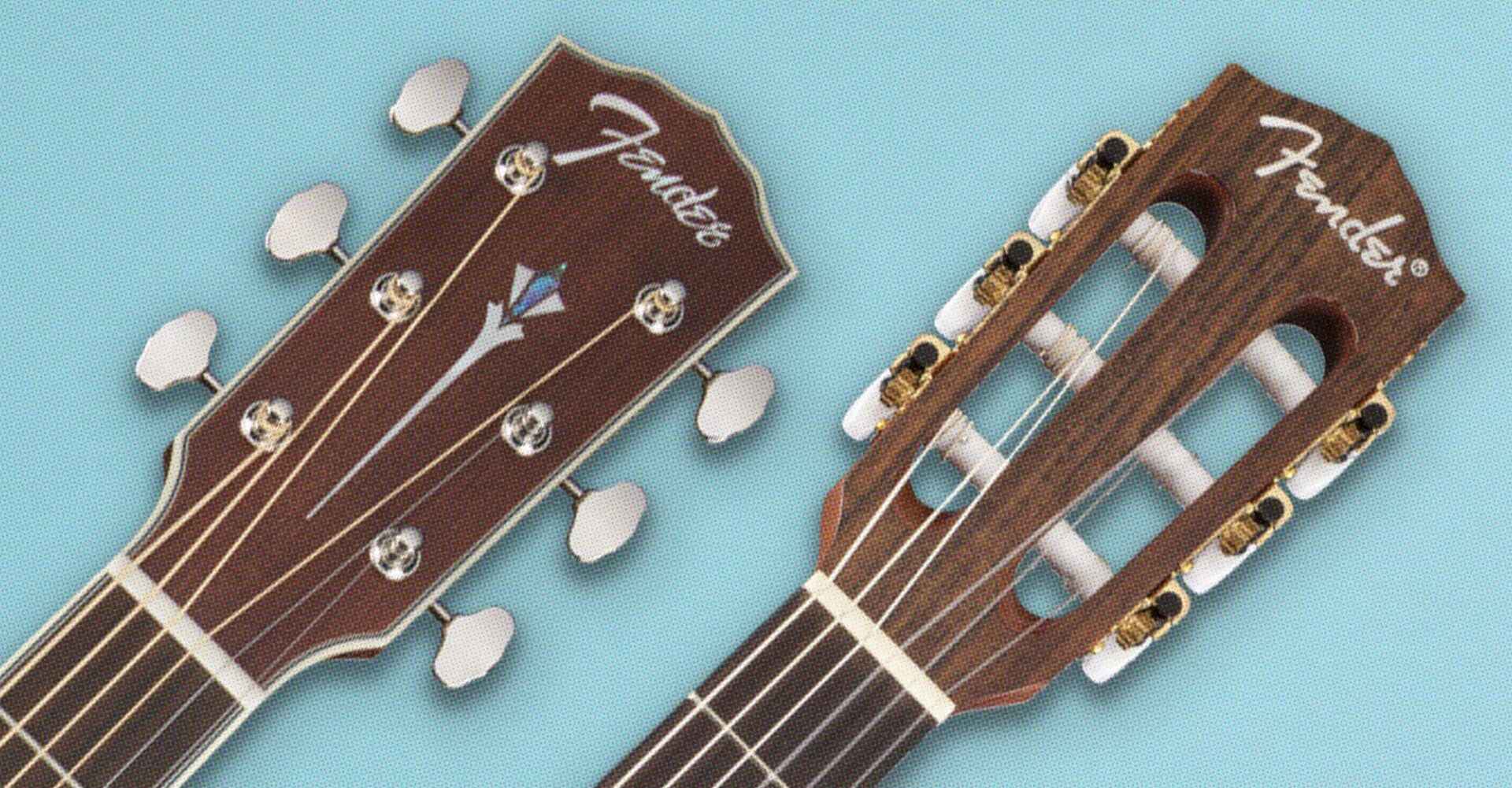Introduction
When it comes to playing the acoustic guitar, one of the most essential skills any guitarist must have is the ability to tune their instrument. A well-tuned guitar not only ensures that the notes are in harmony but also enhances the overall sound quality. While using a tuner is the easiest and most accurate way to achieve proper tuning, there may be times when you find yourself without one.
Whether you’re on the go, at a jam session, or simply don’t have a tuner available, fear not! There are several tried-and-true methods you can use to tune your acoustic guitar without relying on a tuner. In this article, we will explore some of these methods and provide you with the confidence and knowledge to tune your acoustic guitar wherever and whenever you need to.
Tuning your guitar without a tuner may require a bit more patience and practice, but it is a valuable skill to have in your repertoire. Not only will it help you become more self-reliant as a guitarist, but it will also allow you to adapt and play in situations where a tuner is not feasible.
In the following sections, we will discuss various methods you can use to tune your acoustic guitar without a tuner. These methods range from utilizing the 5th-fret method and harmonics to relative tuning with another instrument and using a reference pitch. Each method has its own advantages and may work better for different situations or skill levels.
So, whether you’re gearing up for a gig, getting ready to jam with friends, or simply want to practice at home, read on to discover how you can tune your acoustic guitar without a tuner and keep your playing sounding pitch-perfect.
Why Tune Your Guitar Without a Tuner?
While using a tuner is convenient and highly accurate, there are instances where you may find yourself in a situation where a tuner is not available or practical. Learning how to tune your guitar without a tuner allows you to adapt and remain flexible as a guitarist. Here are a few reasons why it’s essential to tune your guitar without a tuner:
- Emergency situations: Imagine you’re about to perform at a gig or join a jam session, and your tuner suddenly malfunctions or gets misplaced. Knowing how to tune your guitar without a tuner becomes a valuable skill in these emergency situations.
- Improving your ear: Tuning your guitar without a tuner helps to develop your ear training skills. By relying on your listening capabilities, you can train your ears to recognize when your guitar is in tune and make subtle adjustments accordingly.
- Building musicality: Tuning your guitar without a tuner allows you to understand the relationship between different notes and their harmonies. This deepens your musicality and connection to the instrument, as you become more familiar with how the guitar is tuned and how the strings interact with each other.
- Connecting with other musicians: When playing with other musicians, it’s common to tune your guitars together by ear. Having the ability to match pitches and tune in relation to other instruments is crucial for creating a harmonious musical experience.
- Developing your guitar skills: Mastering the art of tuning your guitar without a tuner cultivates your understanding of the instrument’s mechanics. It helps you become more self-reliant and independent as a guitarist, ultimately enhancing your overall playing skills.
While using a tuner is efficient, learning how to tune your acoustic guitar without one provides you with a practical backup plan and expands your musical capabilities. It’s a valuable skill that not only allows you to adapt to unforeseen circumstances but also deepens your connection to the instrument and strengthens your musicianship.
The Importance of Having a Well-Tuned Guitar
Having a well-tuned guitar is crucial for several reasons. It not only ensures that you are playing in tune with other instruments but also enhances the overall sound quality and playing experience. Here are some key reasons highlighting the importance of having a well-tuned guitar:
- Pitch accuracy: When your guitar is properly tuned, your notes will be in tune with other instruments, allowing you to play in harmony with fellow musicians. This is especially important when playing in a band or ensemble, as a well-tuned guitar will contribute to a cohesive and professional sound.
- Better sound quality: A well-tuned guitar produces a clear and balanced tone, allowing the notes to ring out in their full richness. On the other hand, an out-of-tune guitar can sound dissonant and muffled, compromising the overall quality of your performance.
- Improved playability: When your guitar is in tune, the strings are properly tensioned, making it easier to play. In-tune strings respond better to your fingertips, allowing you to execute chords, scales, and melodies more accurately and effortlessly.
- Musical expression: A well-tuned guitar enables you to express the intended musical nuances and emotions in your playing. Accurate tuning allows for greater dynamic range and control, allowing you to effectively convey your musical ideas.
- Ear training: Tuning your guitar by ear helps develop your auditory skills and strengthens your musical ear. By consistently training your ears to recognize pitch and intervals, you become more attuned to the subtleties of music, aiding you in improvisation and overall musical growth.
- Professionalism: Whether you are performing on stage, recording in a studio, or even playing for your own enjoyment, having a well-tuned guitar demonstrates professionalism and attention to detail. It shows that you care about the quality of your sound and are dedicated to delivering a polished performance.
Ultimately, having a well-tuned guitar is the foundation of producing beautiful music. It not only elevates your playing experience but also enhances the enjoyment for both yourself and your audience. So, take the time to tune your guitar properly and experience the transformative difference it can make in your musical journey.
Method 1: Using the 5th-Fret Method
One of the most common and effective methods of tuning your acoustic guitar without a tuner is the 5th-fret method. This method involves using the natural harmonic at the 5th fret to tune the adjacent string. Here’s how you can utilize this method:
- Tune the low E string: Start by tuning your low E string (the thickest string) to a reference pitch. You can use another tuned instrument, a pitch pipe, or an online reference tone as your source.
- Find the harmonic: Place your finger lightly on the low E string at the 5th fret without pressing it down, creating a natural harmonic.
- Tune the A string: While still holding the harmonic at the 5th fret of the low E string, play the open A string (the next thickest string) and adjust its tuning peg until both notes match. The A string should produce the same pitch as the harmonic at the 5th fret of the low E string.
- Repeat the process: Move on to the next pair of strings, using the same technique. Place your finger lightly on the 5th fret of the A string to produce a harmonic, and tune the adjacent D string to match. Continue this process for the remaining pairs of strings: D to G, G to B, and B to high E.
- Check your tuning: Once you have tuned all the strings using the 5th-fret method, it’s a good idea to go back and double-check the tuning of each string. Play open chords or fretted notes on different positions of the neck to ensure that your guitar is in tune across the entire fretboard.
The 5th-fret method is a reliable and efficient way to tune your guitar without a tuner. However, it’s important to note that this method assumes that the low E string is already in tune. Make sure to start with an accurate reference pitch to ensure proper tuning for the rest of the strings.
By mastering the 5th-fret method, you gain the ability to tune your guitar reliably and quickly in various situations. It empowers you to play in tune with confidence and ensures that your acoustic guitar produces harmonious and pleasing sounds.
Method 2: Using Harmonics
Another effective method for tuning your acoustic guitar without a tuner is using harmonics. Harmonics are natural overtones produced by lightly touching the strings at specific nodal points to create a bell-like sound. This method allows for precise tuning by comparing the harmonics of different strings. Here’s how you can use harmonics to tune your guitar:
- Tune the low E string: Start by tuning your low E string to a reference pitch, just like in the previous method.
- Find the 5th fret harmonic: Place your finger lightly on the 5th fret of the low E string to produce a harmonic. Let it ring out.
- Tune the A string: While still allowing the harmonic at the 5th fret of the low E string to ring, play the open A string. Adjust the tuning peg of the A string until the harmonic at the 5th fret of the low E string matches the pitch of the open A string.
- Move to the 7th fret: Place your finger lightly on the 7th fret of the A string to produce another harmonic.
- Tune the D string: Play the open D string and adjust its tuning peg until the harmonic at the 7th fret of the A string matches the pitch of the open D string.
- Repeat for the G, B, and high E strings: Follow the same process by finding the harmonics at the 5th and 7th frets of each newly tuned string and matching them to the adjacent open strings.
- Check your tuning: Once you have completed the process for all the strings, go back and double-check the tuning of each string. Play different chords and notes across the fretboard to ensure accurate tuning throughout.
Using harmonics to tune your acoustic guitar without a tuner allows for precise tuning by comparing the natural overtones produced on each string. While it may take some practice to recognize and match the harmonics, this method provides excellent tuning accuracy and ensures that your guitar produces harmonious and well-tuned sounds.
Method 3: Relative Tuning with Another Instrument
If you find yourself without a tuner or any reference pitch, another reliable method for tuning your acoustic guitar is relative tuning with another instrument. This method involves using another instrument, such as a piano, keyboard, or a well-tuned guitar, as a reference to tune your own guitar. Here’s how you can use relative tuning to tune your acoustic guitar:
- Select a reference instrument: Choose a well-tuned instrument, like a piano or a keyboard, as your reference for tuning your guitar. Alternatively, if you have access to another guitar that is properly tuned, you can use it as your reference instrument.
- Tune the reference instrument: Ensure that the reference instrument is properly tuned. Use a tuner or any other reliable method to make sure that it is accurately pitched.
- Match the reference pitch: Play a note on the reference instrument, such as the E string on a guitar or the middle C on a piano, and use your ear to match the pitch on your acoustic guitar’s corresponding string. Adjust the tuning peg of your guitar until the two notes sound the same.
- Repeat for the remaining strings: Continue this process for each string of your acoustic guitar. Play the reference note on the reference instrument and adjust the corresponding string on your guitar until they match in pitch.
- Check your tuning: Once you have tuned all the strings using the relative tuning method, it’s a good idea to go back and double-check the tuning of each string. Play open chords or fretted notes on different positions of the neck to ensure that your guitar is in tune across the entire fretboard.
Relative tuning with another instrument is a practical method that allows you to tune your guitar accurately even without a tuner. It relies on your ability to match pitches by ear, developing your sense of relative pitch in the process. By utilizing this method, you can ensure that your acoustic guitar is in harmony with another instrument and produce well-tuned, pleasing sounds.
Method 4: Using a Reference Pitch
When a tuner or other instruments are not available, you can tune your acoustic guitar by using a reference pitch. This method involves using a known pitch as a reference point, such as an online tuning website, tuning fork, or a reference tone from a musical instrument. Here’s how you can use a reference pitch to tune your acoustic guitar:
- Find a reliable reference pitch: Start by obtaining a reliable reference pitch that you can use to tune your guitar. This can be a digital tuner app, an online tuning website, or even a reference tone from another musical instrument.
- Tune one string: Begin by plucking the low E string (the thickest string) and adjust its tuning peg until it matches the reference pitch. Listen carefully and make fine adjustments as necessary.
- Use the fifth-fret method: After tuning the low E string, use the fifth-fret method discussed earlier to tune the remaining strings. Play the harmonic at the 5th fret of each string and match it to the adjacent string, ensuring they produce the same pitch.
- Check your tuning: Once you have tuned all the strings, double-check the tuning by playing open chords or fretted notes up and down the neck. Make further adjustments if needed to achieve accurate tuning across the entire fretboard.
By using a reference pitch to tune your acoustic guitar, you can achieve accurate tuning even without a tuner. While this method relies on your ability to compare pitches and make adjustments by ear, it is an effective way to ensure your guitar is in tune and ready to play.
Remember, practice makes perfect! The more you tune your guitar using a reference pitch, the better you become at discerning pitch differences and achieving precise tuning. So, keep practicing and refining your tuning skills to create beautiful music on your acoustic guitar.
Tips for Tuning Your Acoustic Guitar Without a Tuner
Tuning your acoustic guitar without a tuner can be a bit more challenging, but with practice and the right approach, you can achieve accurate tuning. Here are some helpful tips to keep in mind when tuning your acoustic guitar without a tuner:
- Use a reliable reference pitch: When tuning by ear, it’s essential to have a reliable reference pitch, such as an online tuning website, pitch pipe, or another well-tuned instrument. This ensures that you have a starting point to tune your guitar accurately.
- Develop your ear: Tuning by ear requires good listening skills and ear training. Take time to practice recognizing pitch differences and intervals, as this will greatly improve your ability to tune your guitar without a tuner.
- Take advantage of harmonics: Harmonics are useful for tuning, as they can help you compare the pitch of one string to another. Experiment with different harmonic points on the guitar to find the ones that work best for your tuning process.
- Tune in pairs or groups: Instead of tuning each string individually, try tuning strings in pairs or small groups. This can help ensure that the tensions between the strings are balanced, resulting in a more harmonious overall sound.
- Double-check your tuning: After tuning each string, always double-check the tuning by playing chords, scales, or melodies across the fretboard. This will help you identify any inconsistencies in the tuning and make any necessary adjustments.
- Be patient: Tuning without a tuner requires patience and practice. It may take some time to develop a good ear and learn how to make fine adjustments. Stay patient and persistent, and you will improve your tuning skills over time.
- Consider using an electronic reference: If you have access to an electronic reference pitch, such as an app or website, consider using it to assist you in the tuning process. While it’s still important to rely on your ear, having an accurate reference can make the tuning process easier and more precise.
- Get familiar with your guitar’s intonation: Intonation refers to the accuracy of each note on the fretboard. Periodically check your guitar’s intonation using a tuner or reference pitch to ensure that the fretted notes are in tune with the open strings.
Remember, tuning your acoustic guitar without a tuner is a skill that improves with practice. As you become more familiar with the sounds and nuances of your guitar, you will develop a better sense of pitch and be able to achieve accurate tuning more easily. So, keep practicing, and enjoy the process of tuning your acoustic guitar without relying on a tuner.
Conclusion
Tuning your acoustic guitar is an essential skill that every guitarist should possess. While using a tuner is the most convenient and accurate method, there may be occasions where a tuner is not available or practical. In such situations, knowing how to tune your guitar without a tuner becomes invaluable.
In this article, we have explored various methods you can use to tune your acoustic guitar without relying on a tuner. From the 5th-fret method and harmonics to relative tuning with another instrument and using a reference pitch, each method offers its own advantages and can be employed depending on your circumstances and preferences.
Remember, tuning your guitar without a tuner requires patience, practice, and a well-developed ear. Take advantage of reliable reference pitches, use harmonics as a tuning aid, and double-check your tuning to ensure accuracy.
By mastering the art of tuning your acoustic guitar without a tuner, you become more self-reliant as a guitarist and develop a deeper connection with your instrument. Furthermore, this skill enables you to adapt to different playing situations and enhances your musicianship.
So, whether you find yourself in an emergency situation without a tuner or simply want to improve your ear training and musicality, practicing these tuning methods will empower you to confidently tune your acoustic guitar and create harmonious music wherever you go.







